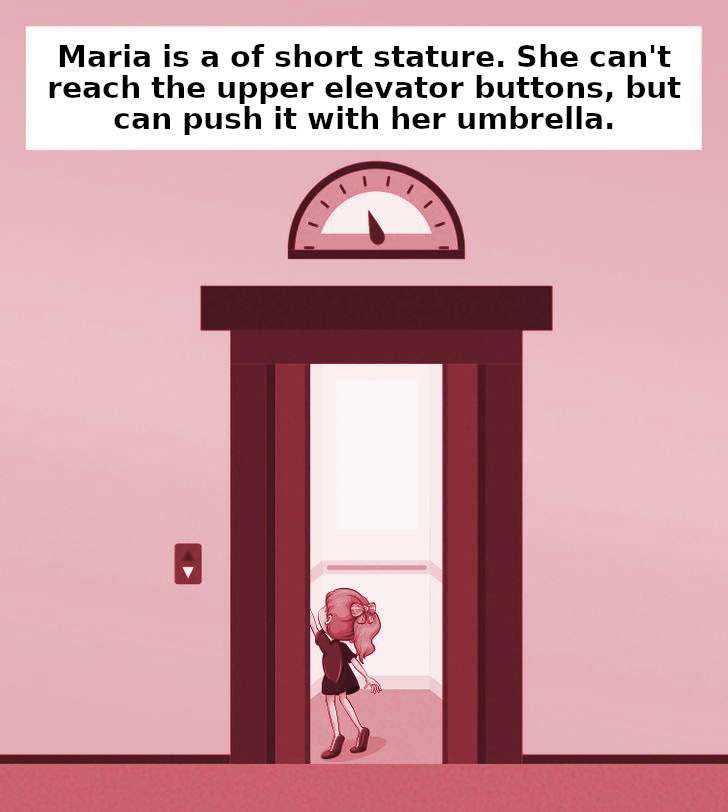Riddles have a unique way of challenging our minds, pushing us to think beyond the obvious and find clever solutions. One such riddle that has puzzled many revolves around Maria and her curious behavior in an elevator. The scenario is simple: Maria lives on the tenth floor of a building, takes the elevator down to the ground floor every morning, but only takes it up to the seventh floor when she returns, despite hating walking. So, why does Maria choose to walk the last three floors to her apartment?

Maria lives on the tenth floor of a building. Every day, she takes the elevator down to the ground floor to go to work or to go shopping. When she returns, she takes the elevator to the seventh floor and walks up the stairs to reach her apartment on the tenth floor. She hates walking, so what’s the reason for her unusual behavior?
At first glance, this may seem perplexing. Why would someone who dislikes walking go out of their way to walk up three flights of stairs, when they could simply take the elevator all the way to their apartment? The solution is simpler than you might think, but it requires thinking outside the box.
The answer to the riddle lies in an aspect of Maria’s height. Maria isn’t avoiding the upper floors out of preference but out of necessity. Maria is short—so short that she cannot reach the buttons for the eighth, ninth, and tenth floors in the elevator.
Every day, Maria can press the ground floor button to descend easily, but when she returns home, she can only reach the button for the seventh floor, which is as high as her arms can extend. This forces her to walk the remaining three flights of stairs to her tenth-floor apartment. It’s not that she enjoys walking—she simply has no other choice.
The genius of this riddle lies in its simplicity. The elevator, a familiar device for most people, becomes an obstacle for Maria due to her stature. The riddle plays on our assumptions that anyone using an elevator can reach all the buttons. But once you introduce the idea that Maria cannot reach the higher floor buttons, everything falls into place.
The riddle touches on a real issue faced by people of short stature or those with physical limitations. Elevators, like many public utilities, are designed with the assumption that users can reach a certain height. For individuals who are shorter, or for those with mobility challenges, everyday actions—such as pressing a button—can become inconvenient or impossible.
Thankfully, modern technology and accessibility features are beginning to account for these differences. In more advanced buildings, voice-activated elevators and low-reach buttons are becoming more common, ensuring that everyone, regardless of height, can easily navigate through public spaces.

Puzzles and riddles like this one aren’t just a form of entertainment—they also play a significant role in cognitive development. Studies have shown that engaging in riddles and brain teasers helps improve several key mental skills, including:
- Problem-solving: Riddles force us to think logically and use deductive reasoning.
- Lateral thinking: Many riddles, like this one, require us to think creatively and approach problems from different angles.
- Memory and retention: Solving riddles regularly sharpens our ability to retain information and recognize patterns.
By regularly engaging with riddles, you can improve your mental agility and keep your brain sharp.
The elevator riddle is a perfect example of how a seemingly simple problem can challenge our assumptions and stretch our brains. Maria’s short stature is the unexpected twist that makes this riddle so effective, and it serves as a reminder that the obvious solution isn’t always the correct one.
Next time you come across a riddle, take your time, think outside the box, and consider every possibility—just as you did with Maria and her elevator. And if you’re ever in a similar situation, don’t forget your umbrella!


